Recent Articles
Popular Makes
Body Types
10 Things You Need to Know About the 2016 Porsche Panamera S and Turbo
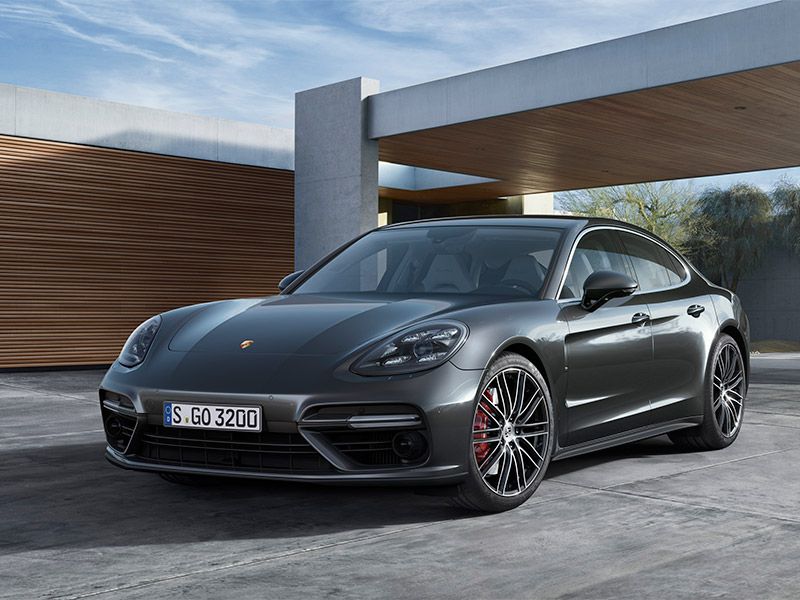
2016 Porsche Panamera hero front angle shot ・ Photo by Porsche
In 2009, Porsche AG gave purists headspins when it pulled the sheets back on the Panamera. What?! A Porsche sedan?
How quaint that anxiety seems now. With Aston Martin following suit with the 4-door Rapide, plus Lamborghini, Bentley, Jaguar, and Maserati about to release SUVs, traditional sports car makers are no longer restricted to 2-door flights of fancy.
For 2017, Porsche has reimagined its Panamera sports sedan from the ground up: All engines and transmissions are new, the infotainment/MMI has been redesigned with the future in mind, and its chassis has been further advanced to optimize its unique driving dynamics.
Porsche invited a handful of American journalists to Berlin to witness the unveiling of the new Panamera. Here are 10 things we learned about Porsche’s second-generation Panamera.
1) It's both a sports car and a luxury sedan.
Despite the moans from Porsche purists, what quickly silenced haters of the Panamera was the fact that the car was so darn good. What made it very rare in the segment was just how well it handled (like a sports car), while offering nearly Mercedes S-Class levels of luxury and refinement. Perhaps only the BMW Alpina and Maserati Quattroporte GTS could give it a run for its money in this unique fusion of elements. Soon came other competitors like the Aston Martin Rapide. Now, Porsche promises its new Panamera will further bridge the worlds of sports cars and luxurious sedans via technological highlights like rear axle steering, three-chamber air suspension and active roll compensation (aka “PDCC SPORT”).
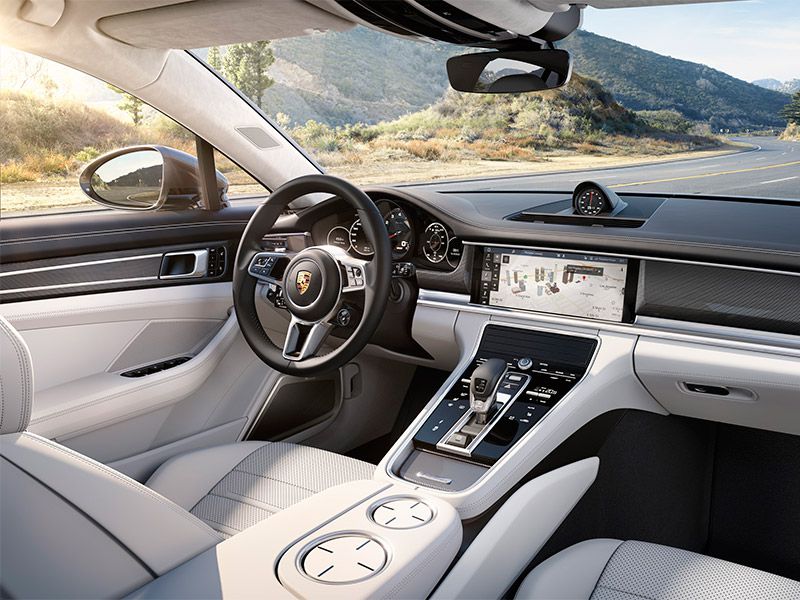
Photo by Porsche
2) Because: The Nurburgring.
To underscore the Panamera’s performance, the Germans lapped the 4-door supersedan around the Nürburgring’s Nordschleife in a mind-boggling 7 minutes, 38 seconds. That’s faster than any production sedan ever—even faster than the Alfa Romeo Giulia Quadrifoglio, the previous record holder. The Giulia Quadrifoglio not only sits two segments below the Panamera, but is also about a half-ton lighter. This is definitive proof of the Panamera’s superb handling, acceleration, and overall chassis quality.
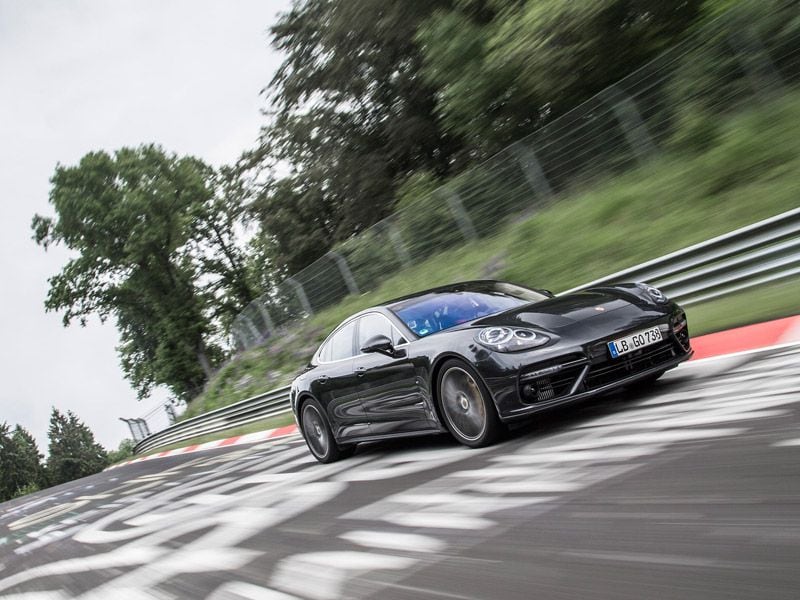
Photo by Porsche
3) Better and Best Powertrains
Two engines are offered in the Panamera at launch, with two more plug-in hybrid options coming in the near future. The Panamera 4S will utilize a 2.9-liter twin-turbo V6 with 440 horsepower (at 5650 rpm) and 405 lb.-ft. of torque (available at only 1750 rpms). The higher-tier Panamera Turbo will feature a 4.0-liter twin-turbo V8 with 550 horsepower (at 5750) and 567 lb.-ft. of torque (at 1960 rpms). Both powerplants feature direct injection and a central turbo layout, boosting power while simultaneously improving fuel economy and reducing emissions. Both V6 and V8 engines come mated to a new iteration of Porsche’s 8-speed dual-clutch PDK transmission, and every new Panamera will be all-wheel drive.
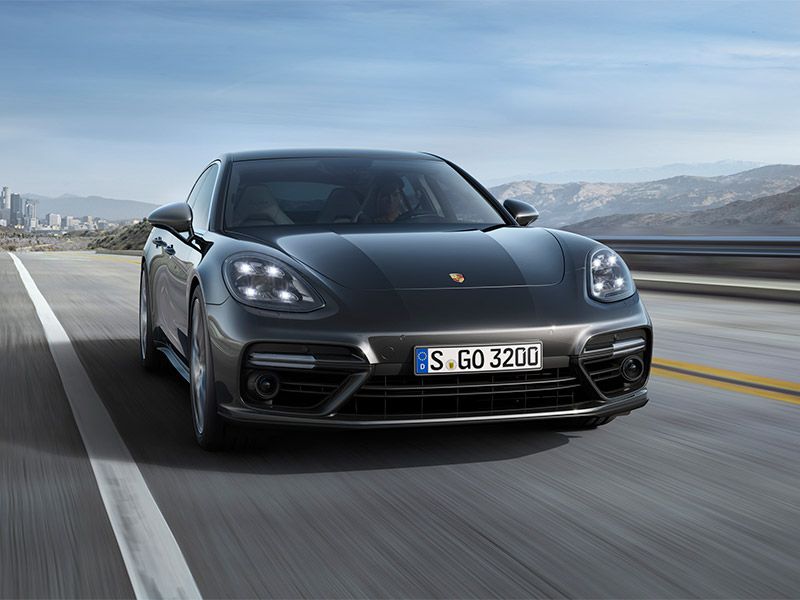
Photo by Porsche
4) Evolved Exterior Design
Porsche designers have opted for “evolution” over “revolution.” This second-generation car is instantly recognizable as a Panamera, with Porsche’s signature “Flyline” silhouette linking it to the iconic 911. There’s the long hood, the muscular rear haunches, and a roof that lies 20 mm lower in the back. The wheelbase has also grown, with the front wheel moved forward a couple inches to improve the Panamera's athleticism.
The headlamps have grown sharper, and adopted Porsche’s signature “4-point” LED running lights seen throughout the entire line-up. Perhaps the sedan’s most salient design flourish is the rear light band connecting the taillamps. It reveals much about the Panamera’s aesthetic philosophy: What was once reserved for the 911 is now applicable to its 4-door brethren.
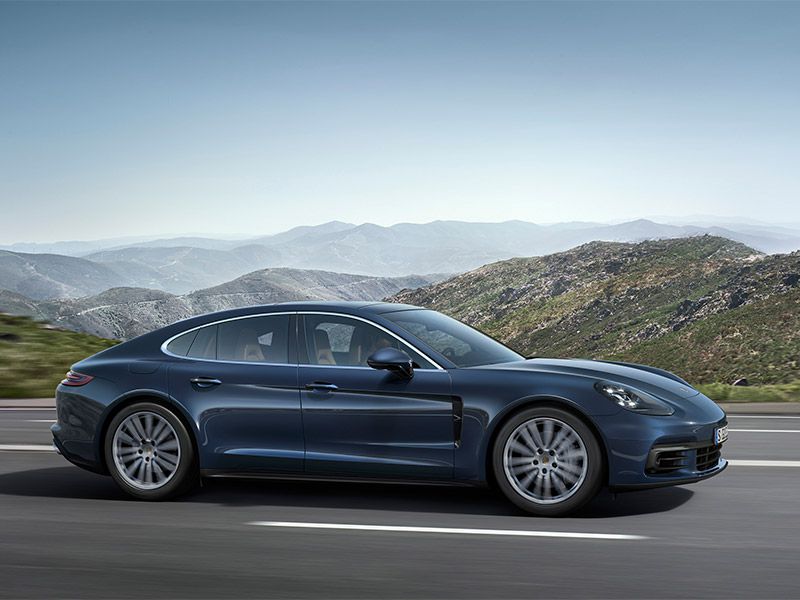
Photo by Porsche
5) New Sport Response Button
A Sport Response Button, which debuted in the Porsche 918 Spyder, will now be available on the Panamera fitted with Sport Chrono package. Located on the steering wheel in the center of the Mode Switch wheel (the tiny circle that allows you to switch among Normal, Sport, Sport+ and Individual driving modes), the SRB dials up every system in the Panamera to its highest level for 20 seconds. Unofficially dubbed the “Push To Pass” button in layman’s terms, what SRB does is temporarily heighten the Panamera to its most virulent form. So even if you’re in Normal mode, with the simple press of a button the Panamera instantly transforms into the fastest, quickest, firmest vehicle it can so you can make short work of that RV blocking traffic.
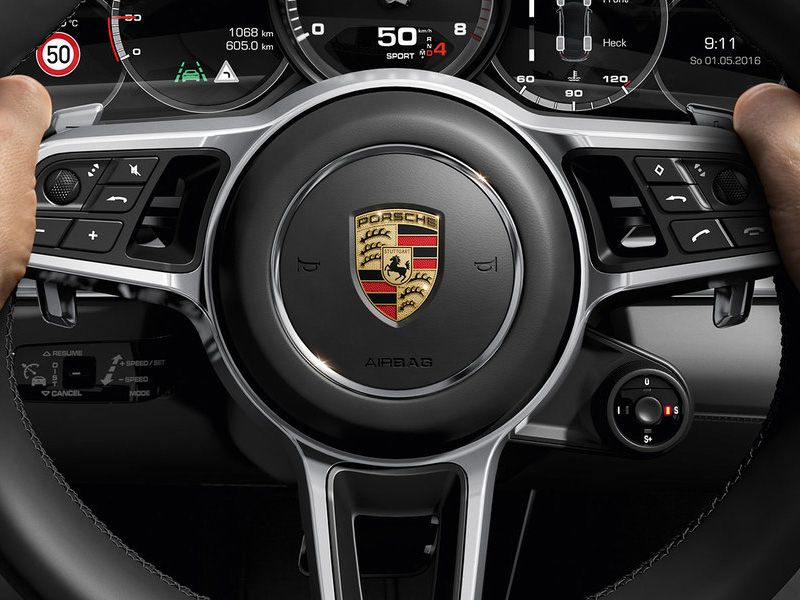
6) It's Made in the Ultra Advanced Leipzig Factory
Porsche AG has moved production of the Panamera to Leipzig. This advanced manufacturing facility will produce all of Porsche’s 4-door offerings, including the Macan, Cayenne, and Panamera. Capable of building 660 units per day, the Leipzig plant should be able to absorb the forecasted swelling sales of Porsche’s 4-door offerings,m which will include the 4-cylinder Macan crossover).
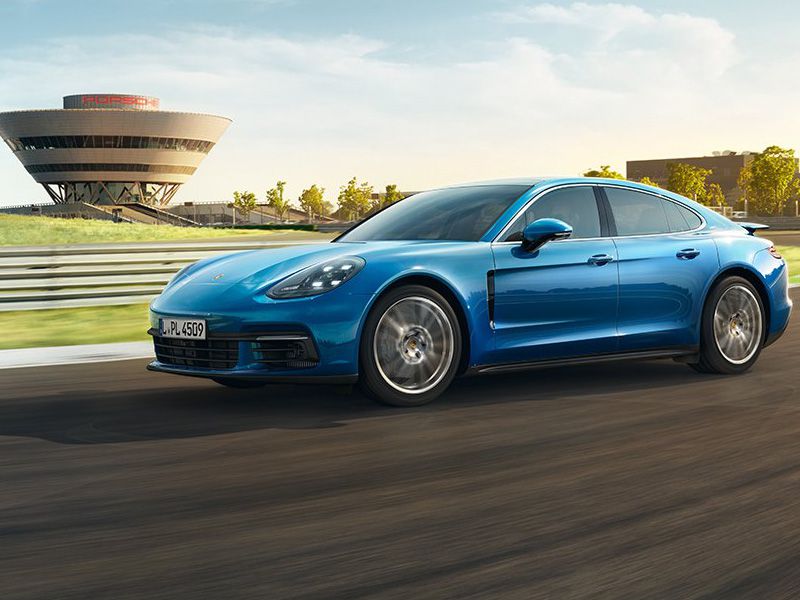
Photo by Porsche
7) Fully Integrated 4D Chassis Control
The new Porsche Panamera has 4D Chassis Control, a new software that connects into one intelligent system all of the Panamera’s chassis components: 3-chamber air suspension, Porsche Active Suspension Management (PASM), Porsche Dynamic Chassis Control Sport (PDCC Sport) and rear-axle steering. For the first time ever, all the different ECUs from the chassis will work together instead of acting independently.
Currently, the Panamera's shock absorbers don't care what the throttle is doing or what gear you’re in, because they each had their own computing module. Now with 4D, each of the modules will constantly communicate with one another.
The result is more flexibility. Say you’re in Comfort mode and you floor the throttle; normally the suspension would stay constant. 4D will stiffen the suspension, downshift gears, and maybe even change the ride height or activate the rear wing. When you release the throttle, the suspension will eventually return to Comfort mode.
The new Panamera is the first Porsche to have fully integrated 4D Chassis Control, and it required a whole new level of programming.
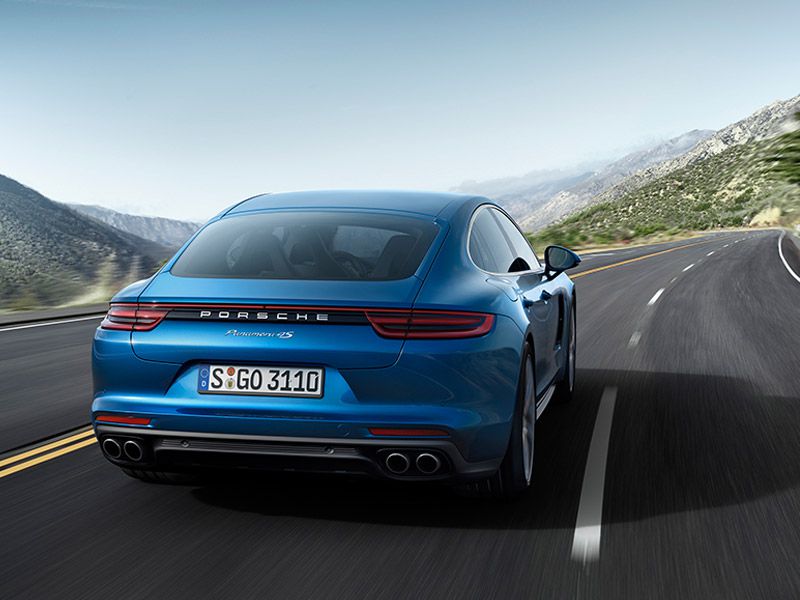
Photo by Porsche
8) New 3-Chamber Air Suspension
New for the second-generation Panamera, Porsche’s 3-Chamber Air Suspension allows for greater variability in ride quality. With three different compartments that can be independently turned on and off depending on driving conditions, the spring rate is fine tuned for the given condtion. The new three-chamber system increases the spread: The Sport option is even sportier (firmer), and the Comfort option more comfortable (softer). Perhaps best of all, the third chamber also allows for another setting that splits the difference.
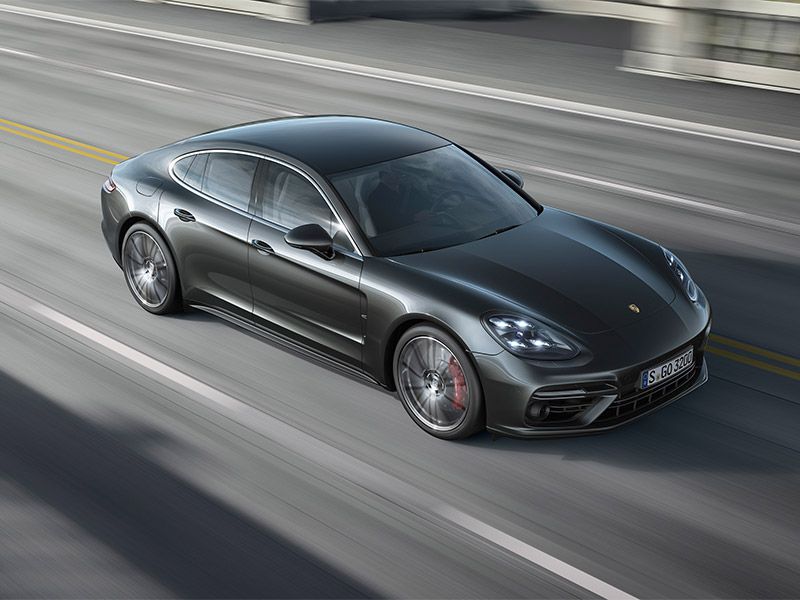
Photo by Porsche
9) Active Aerodynamics
The new Porsche Panamera 4S uses a single-plane wing, but the new Panamera Turbo gets an active rear spoiler. This multi-part rear wing has two two elements. The first looks like the 911 wing behind the rear window. The second piece sits below that. When the rear spoiler is deployed, the first piece lifts, splits in half and the second piece rises and completes the middle section.
The Panamera is designed to be as aerodynamic as possible, but given the speeds it can reach, it needs additional downforce, which is supplied by the active spoiler. There is no set speed at which the spoiler deploys; the threshold changes depending on what mode you’re in, and how dynamic you’re driving.
There are also active flaps in the front fascia, as in the 911 and 918 Spyder. Opening them cools the engine but decreases aerodynamics, while closing them improves aero. The CPU decides what's best; in a cold climate, for instance, it will keep the flaps closed.
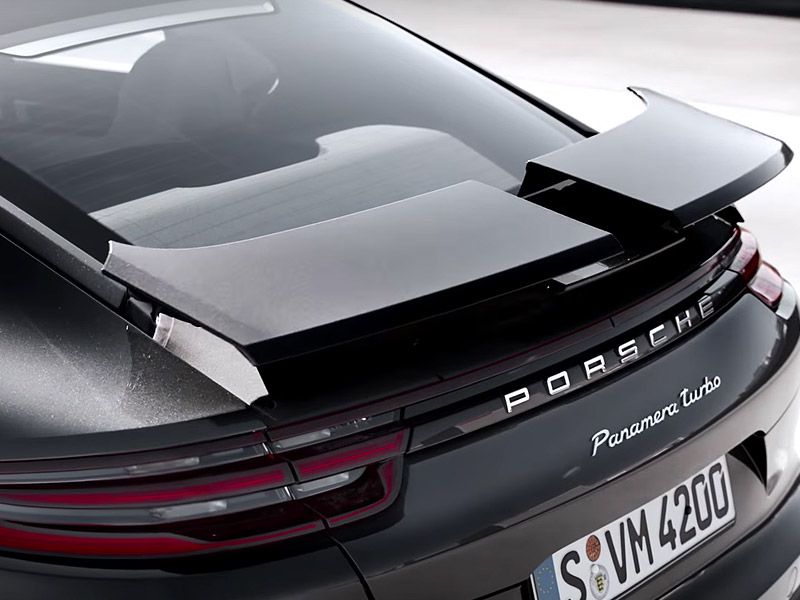
Photo by Porsche
10) PDCC Sport: Amazing Anti-Roll Technology
Most active anti-roll systems use hydraulics to stabilize a vehicle. Porsche’s PDCC SPORT system uses electromechanical actuators. This has several advantages: You don’t need hydraulics going through the car, so the lines, tubes, and pump are removed. This represents a weight savings, and there's no energy consumed by powering the pump, so it's more efficient.
More important: The electro-mechanical actuators react faster. While hydraulics require a slight delay to work, the electro-mechanical system is instant. It does require a lot of electricity, however, so Porsche reinforces the traditional 12-volt system (required for lights, radio, etc.) with a 48-volt system. This network debuted in the new Bentley Bentayga, and was developed collaboratively by Bentley, Porsche, and ZF Sachs. (BMW also uses this system for its 7 Series, but in a less powerful, slower-reacting 12-volt iteration).
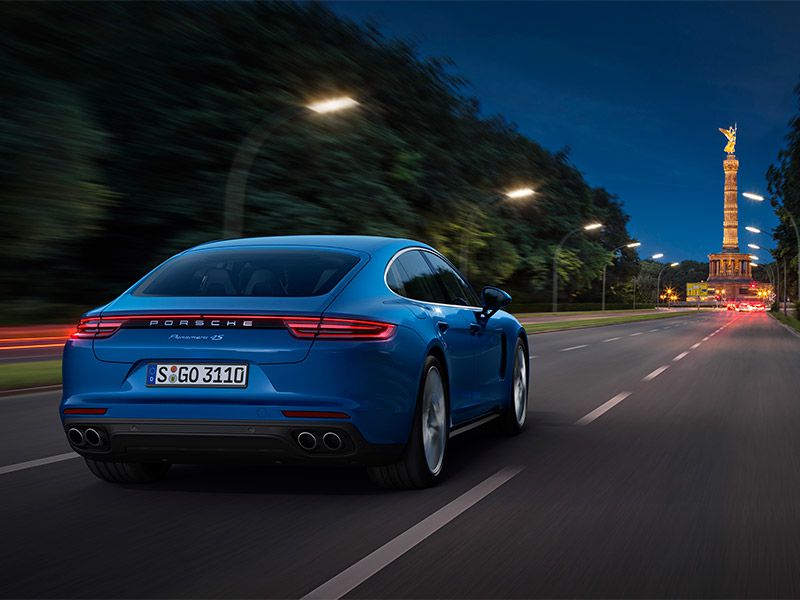
Photo by Porsche